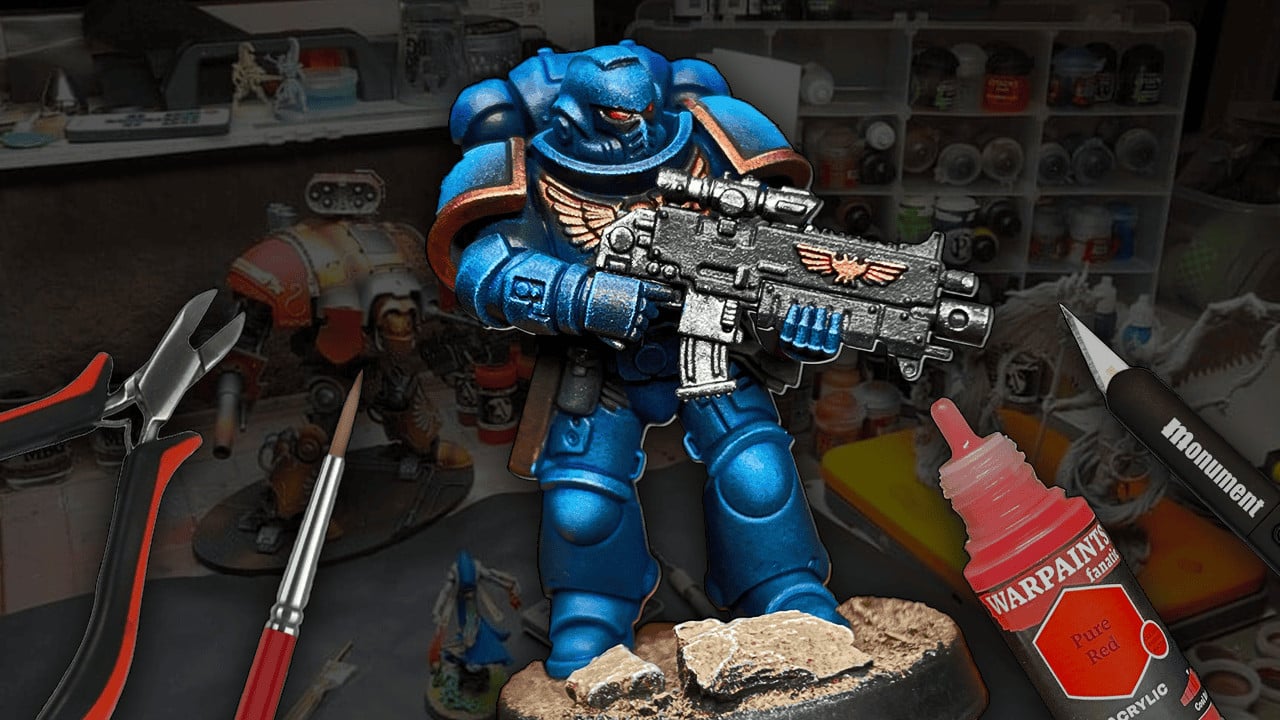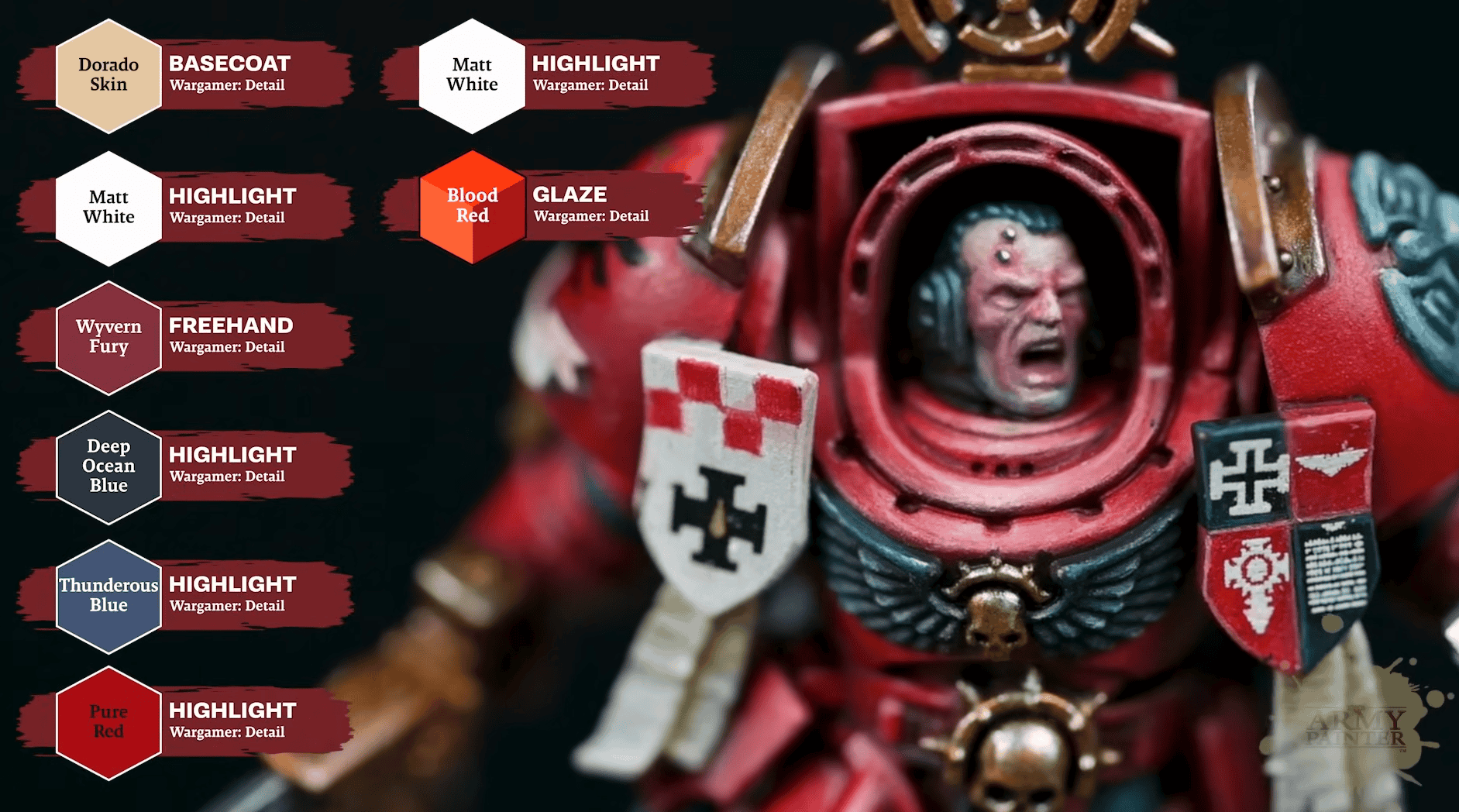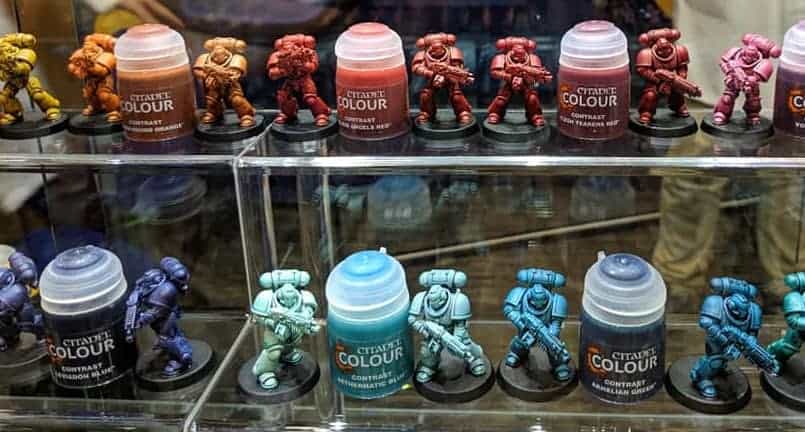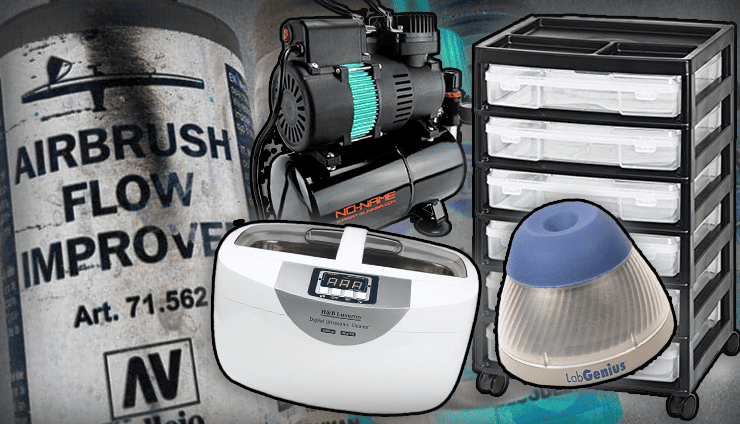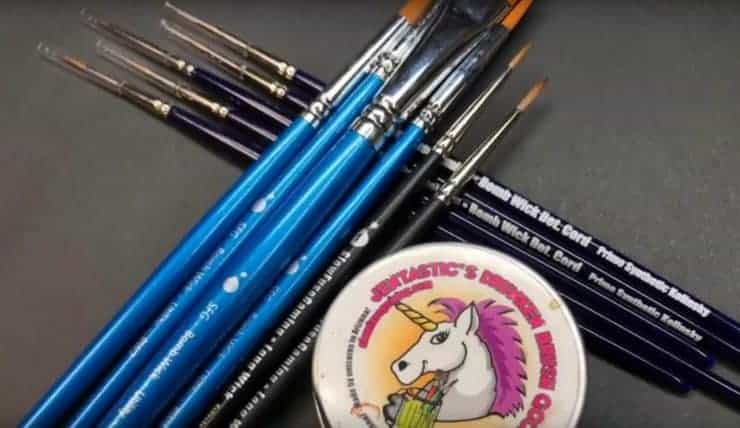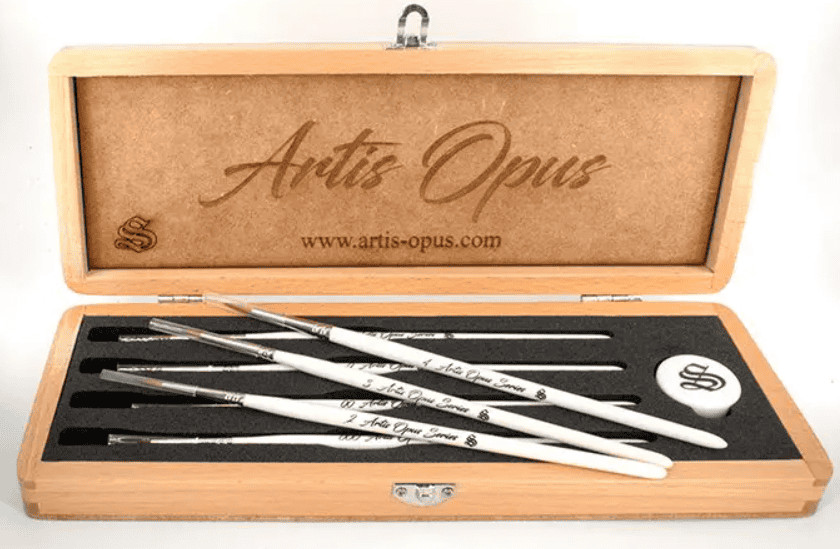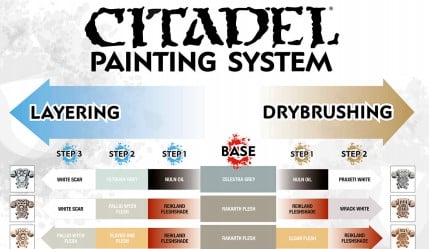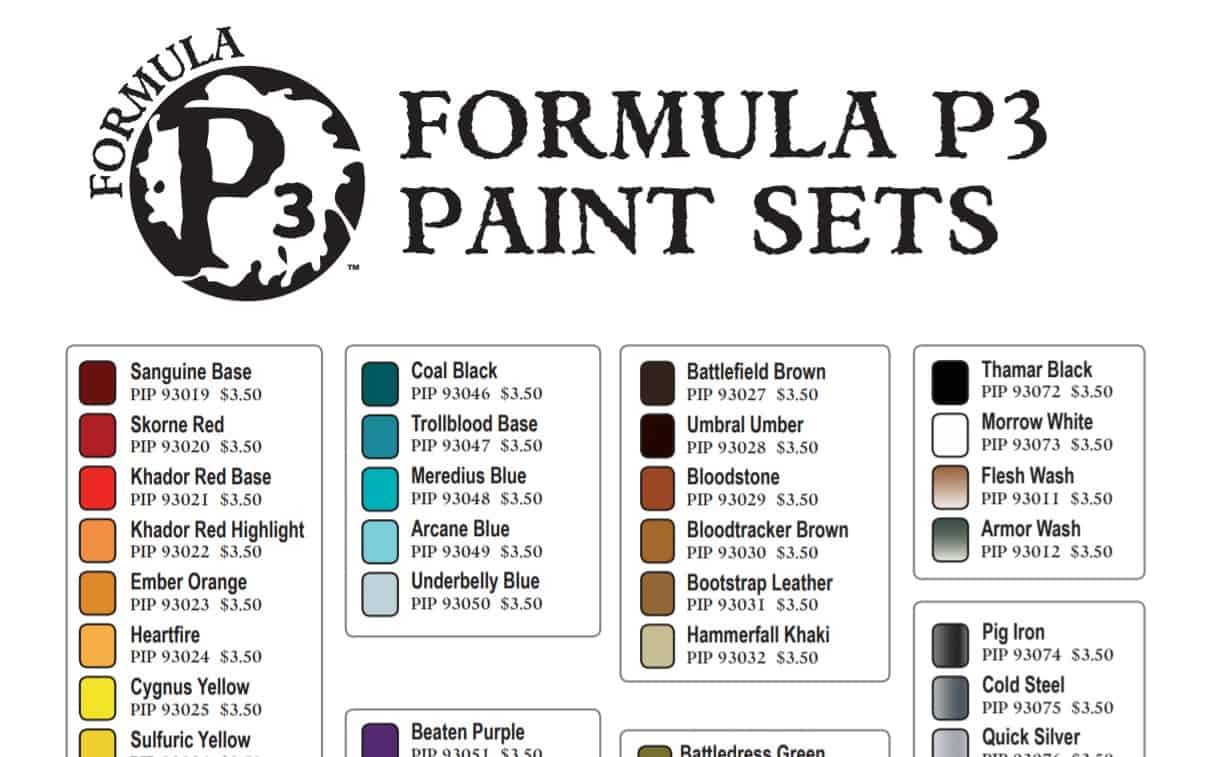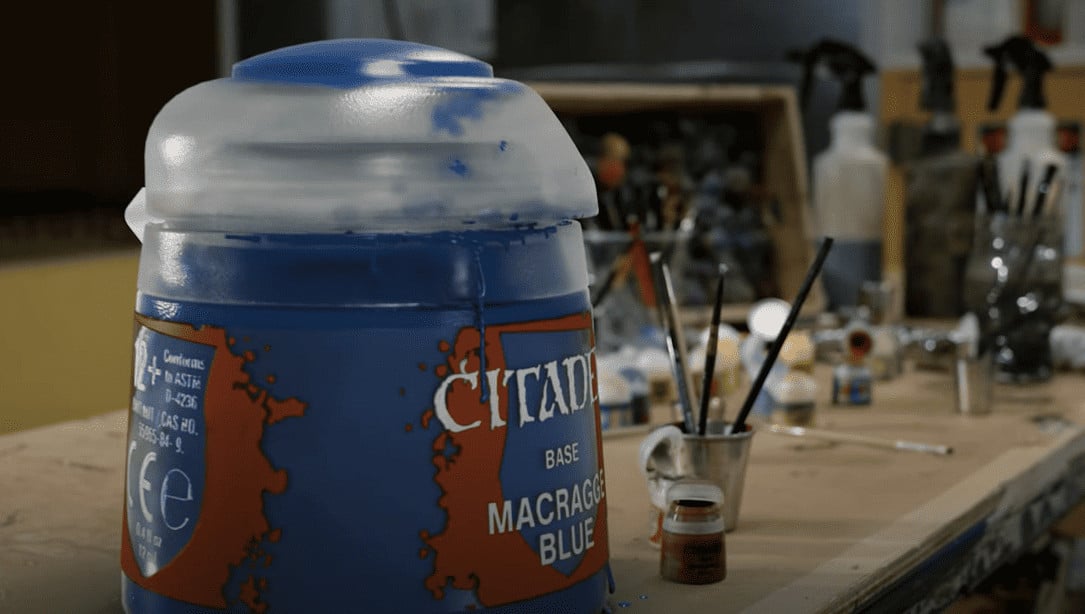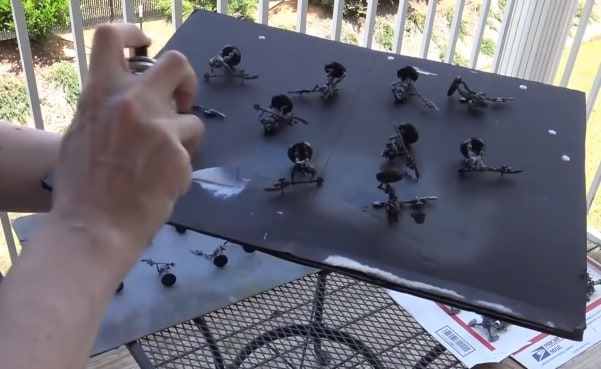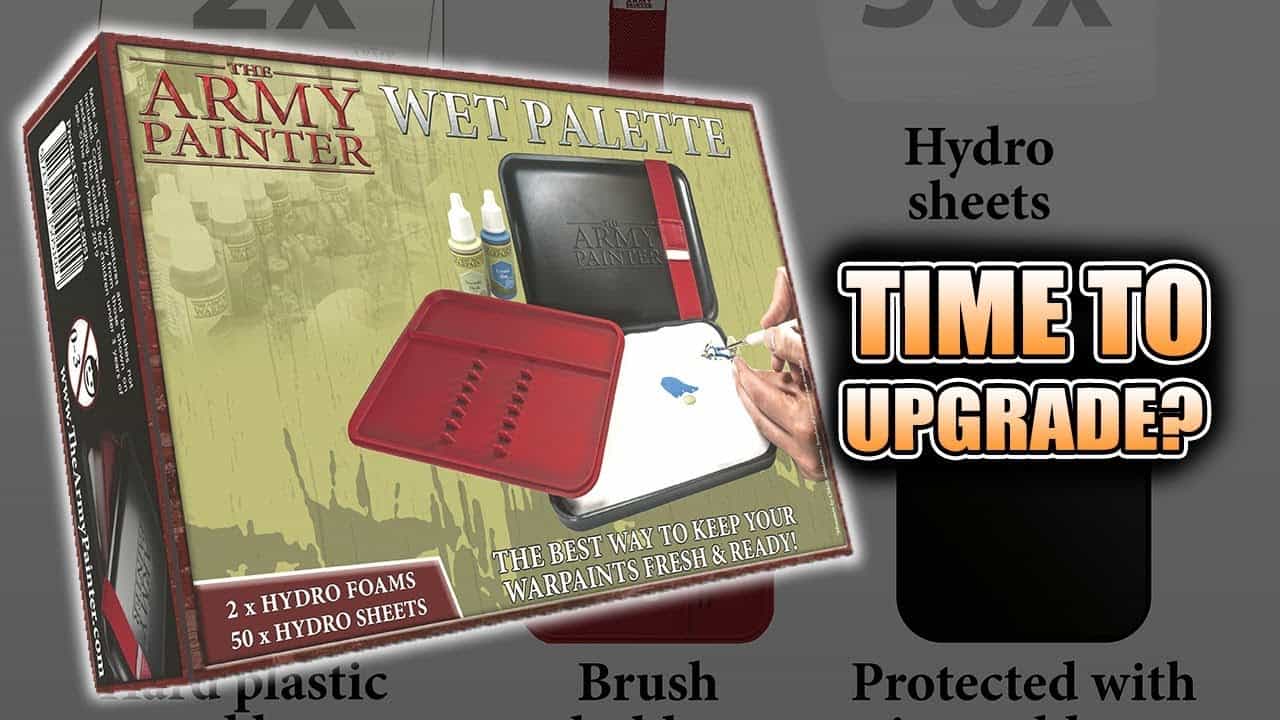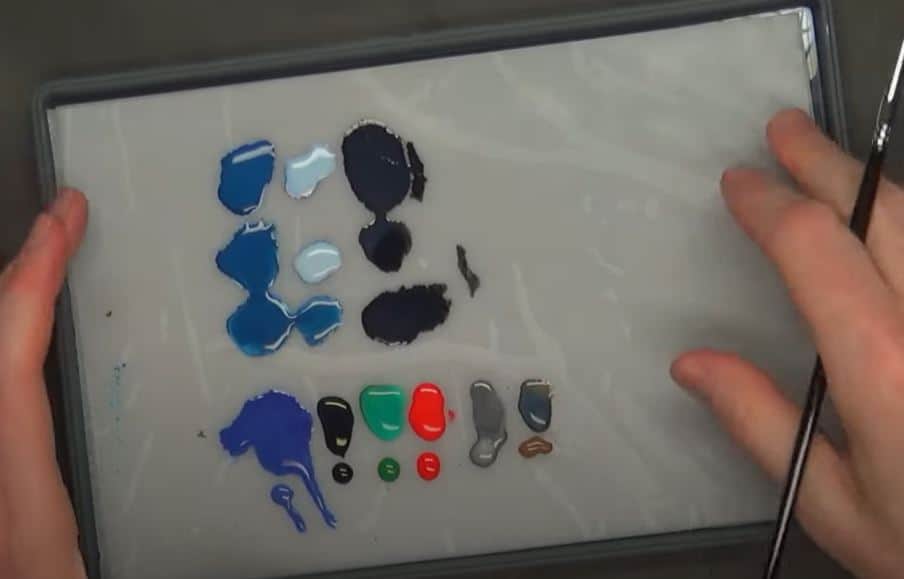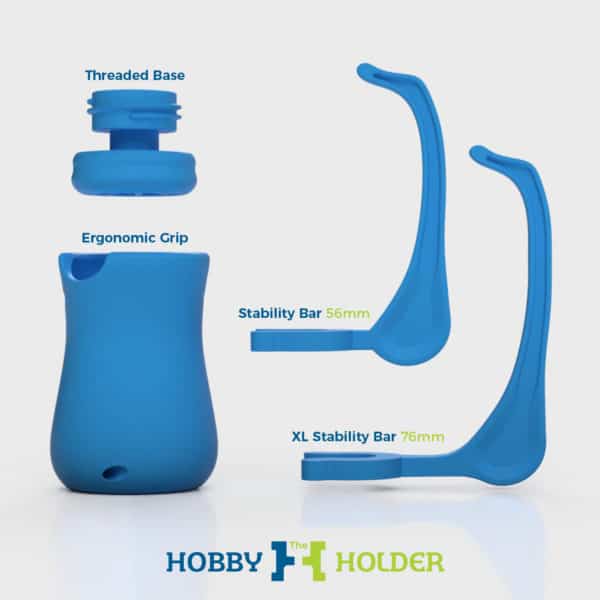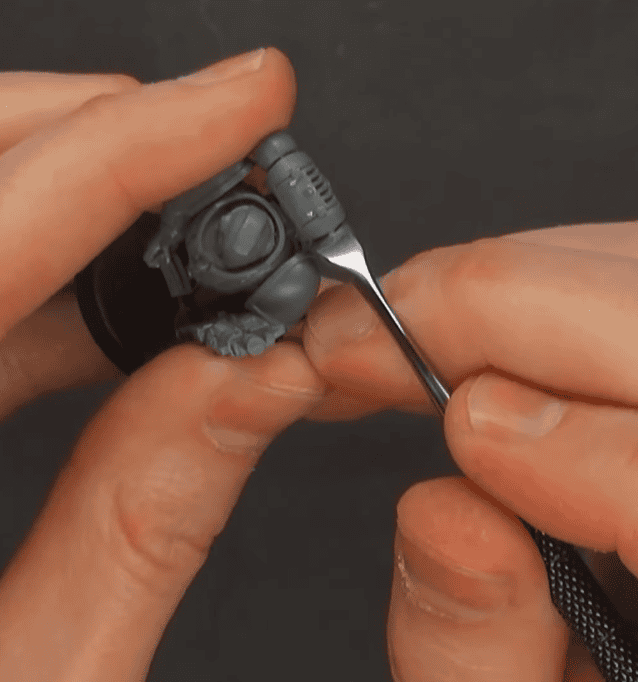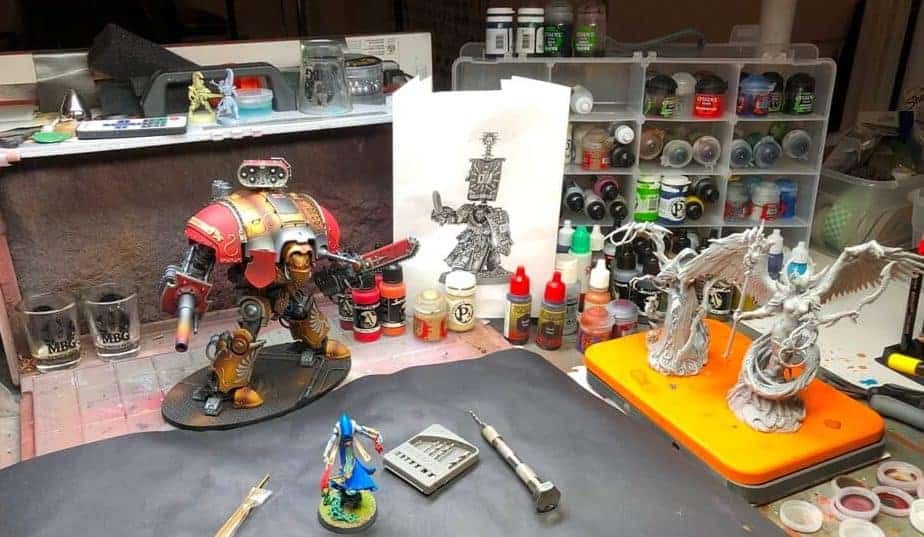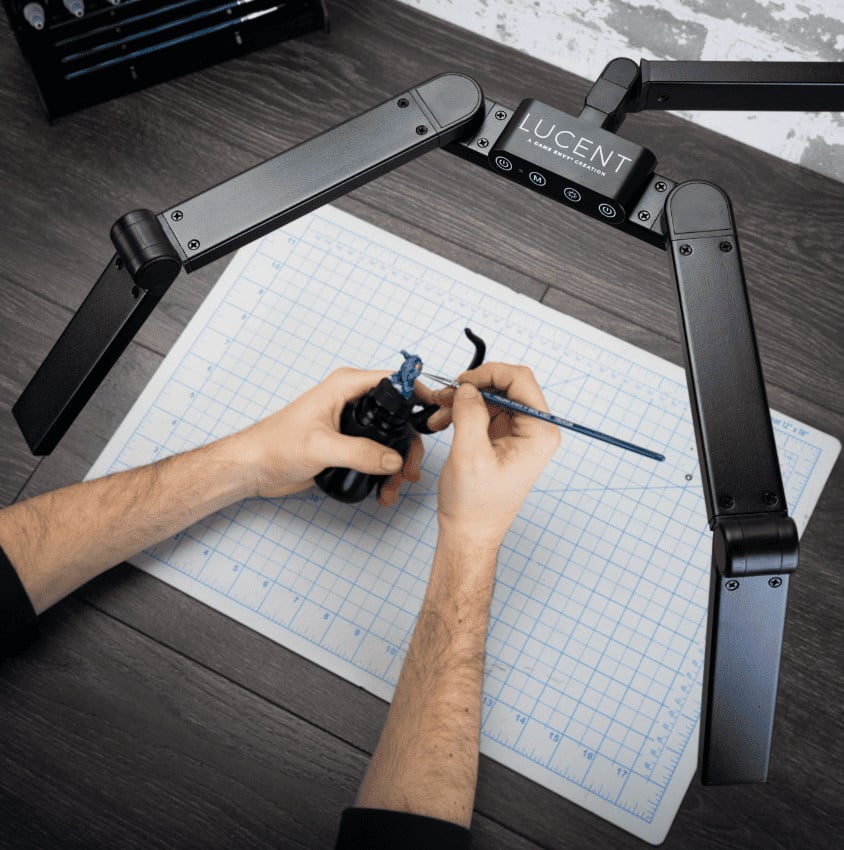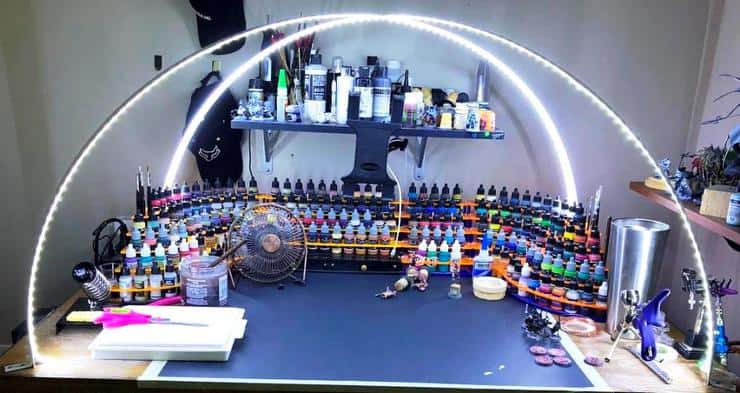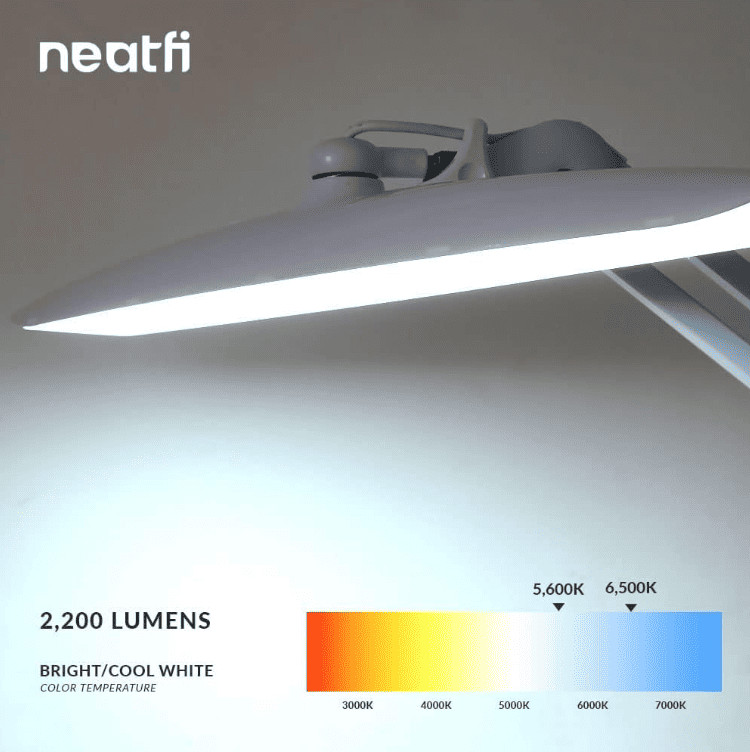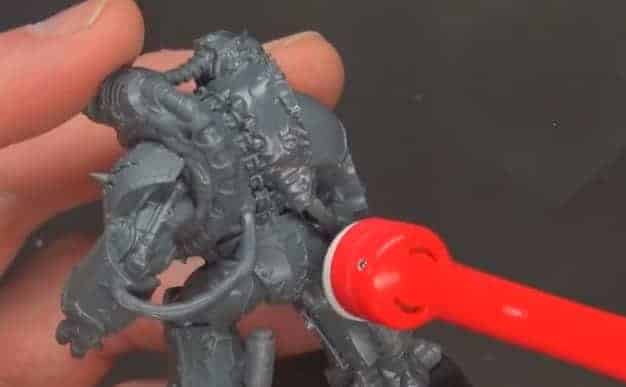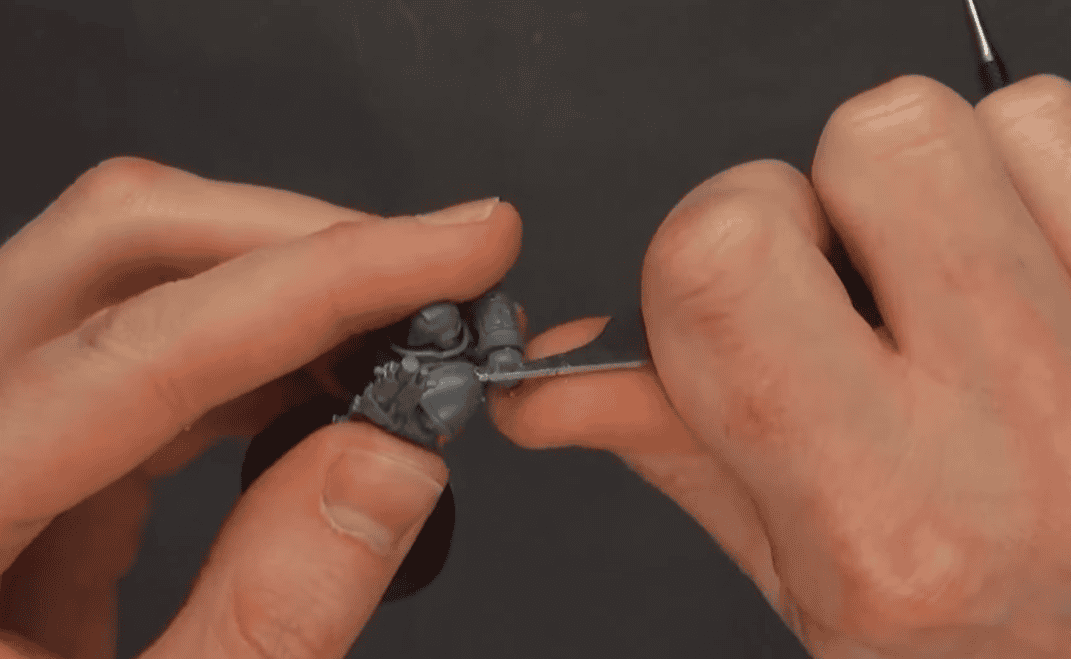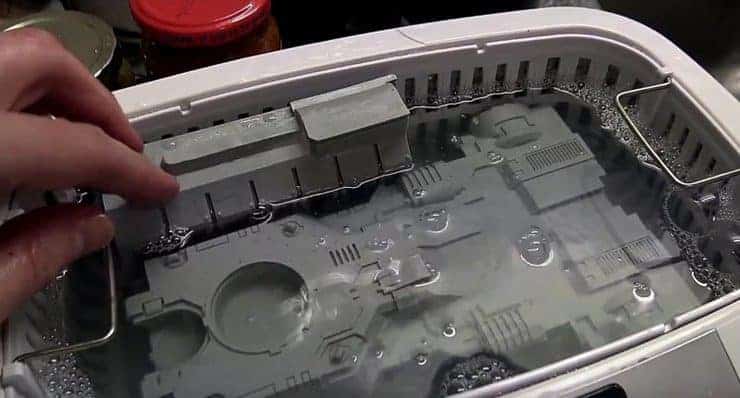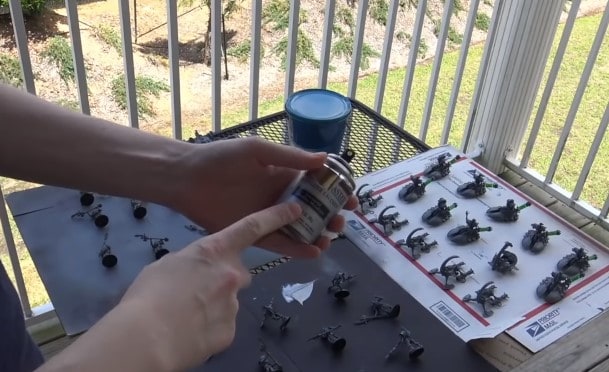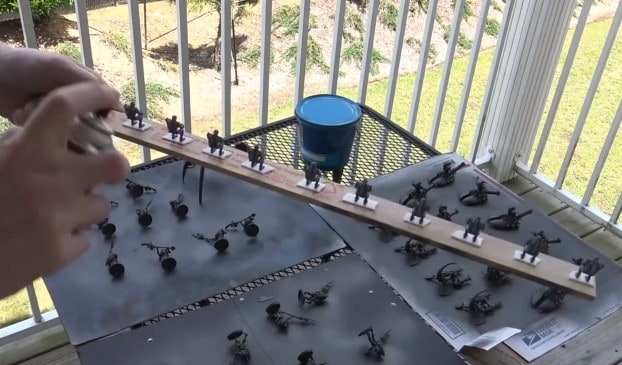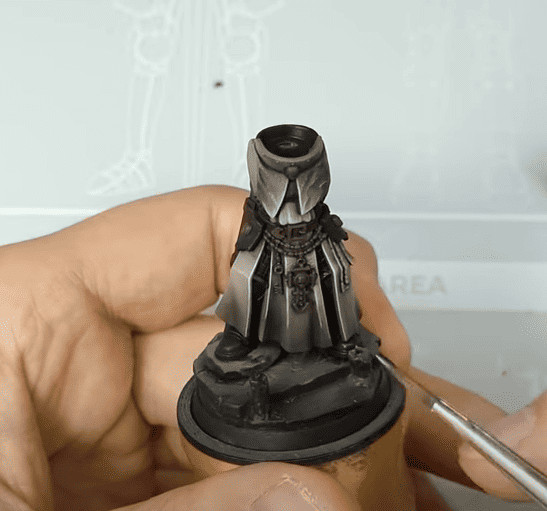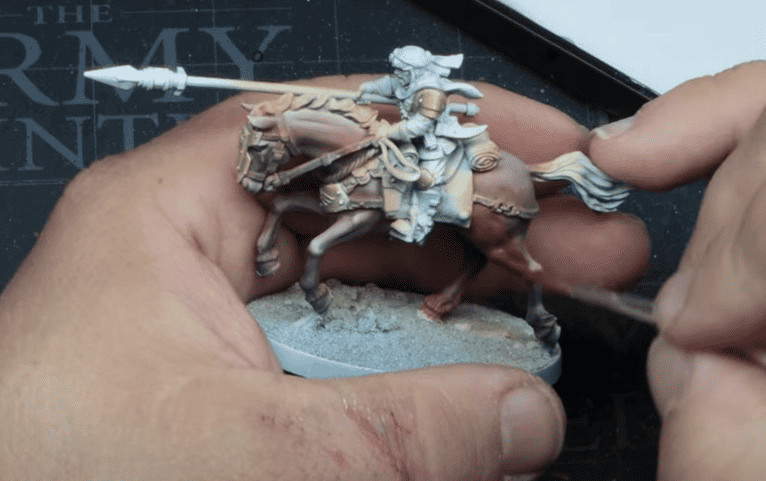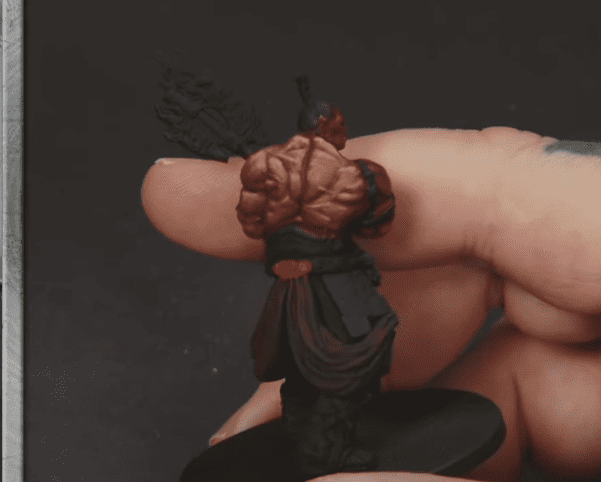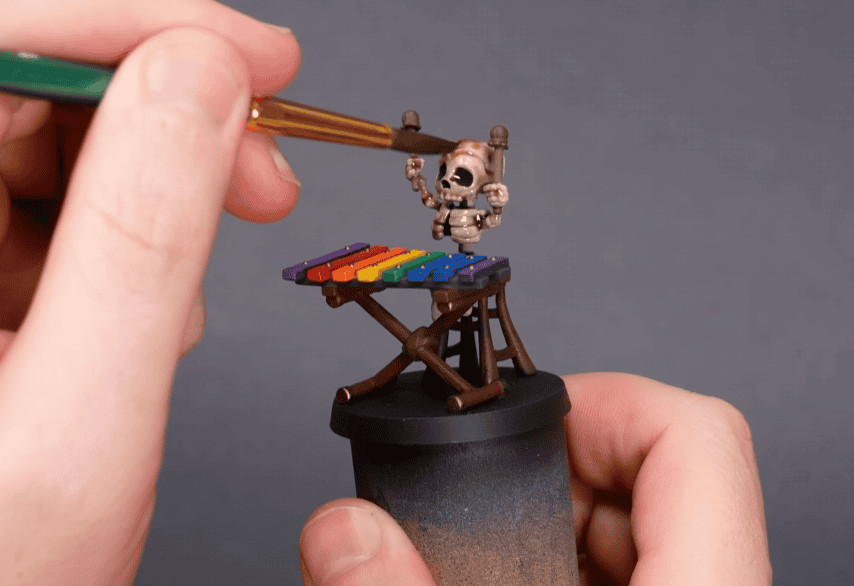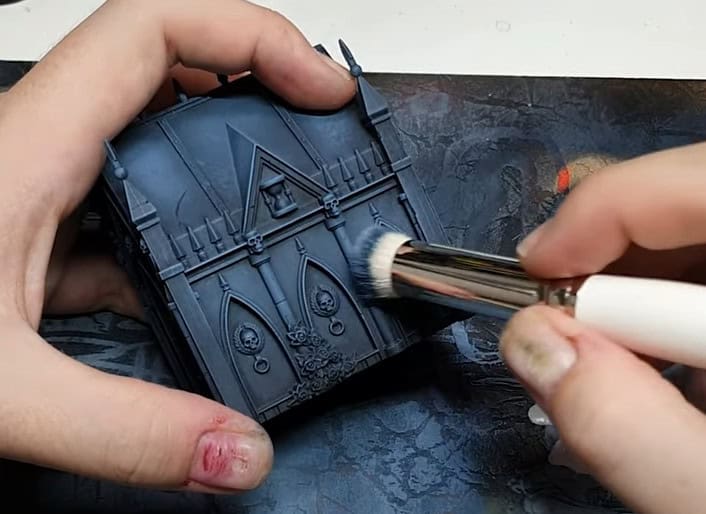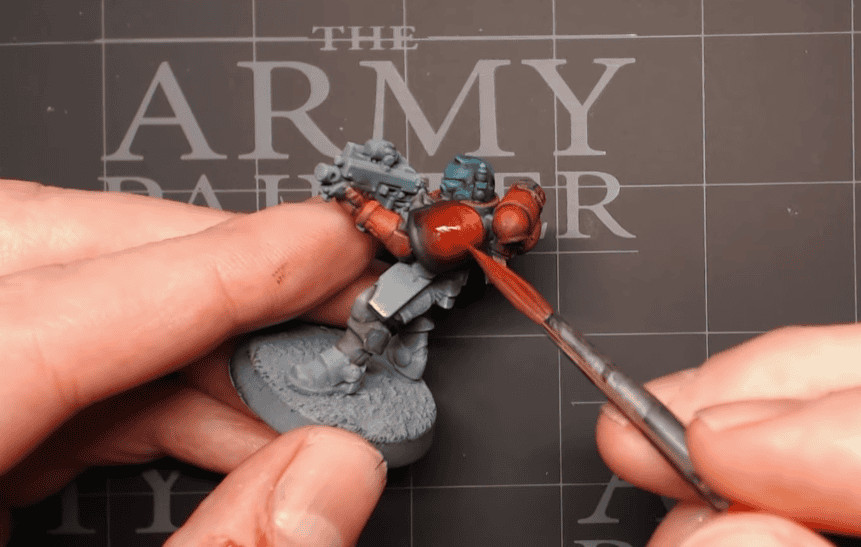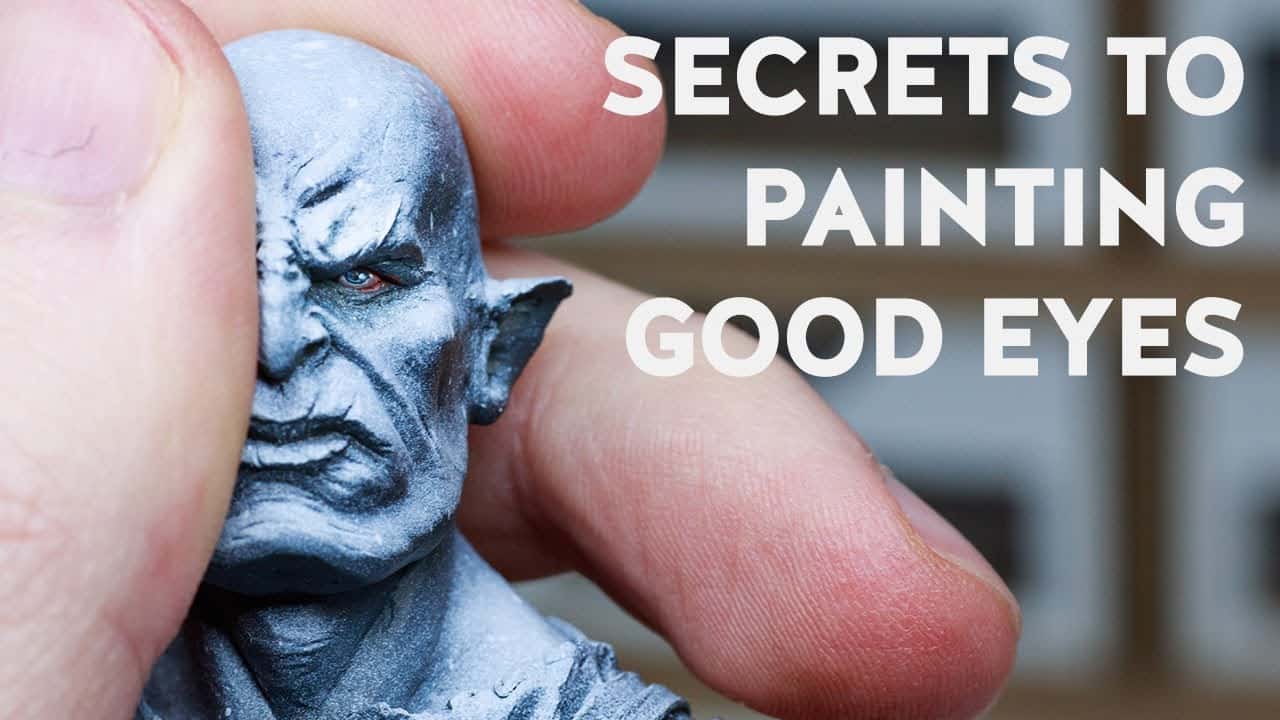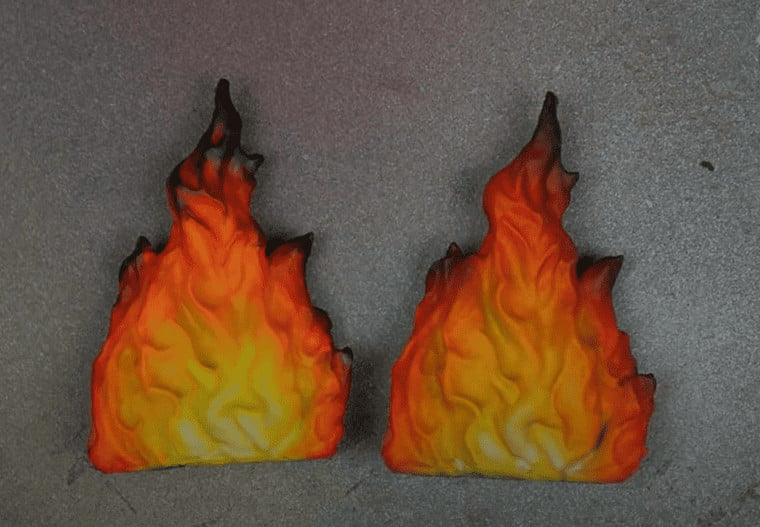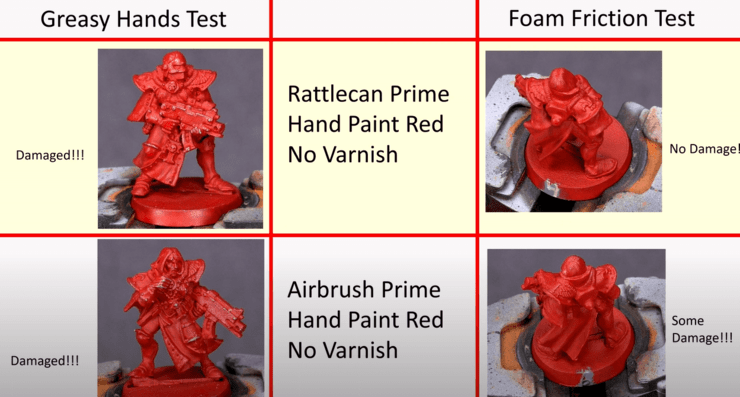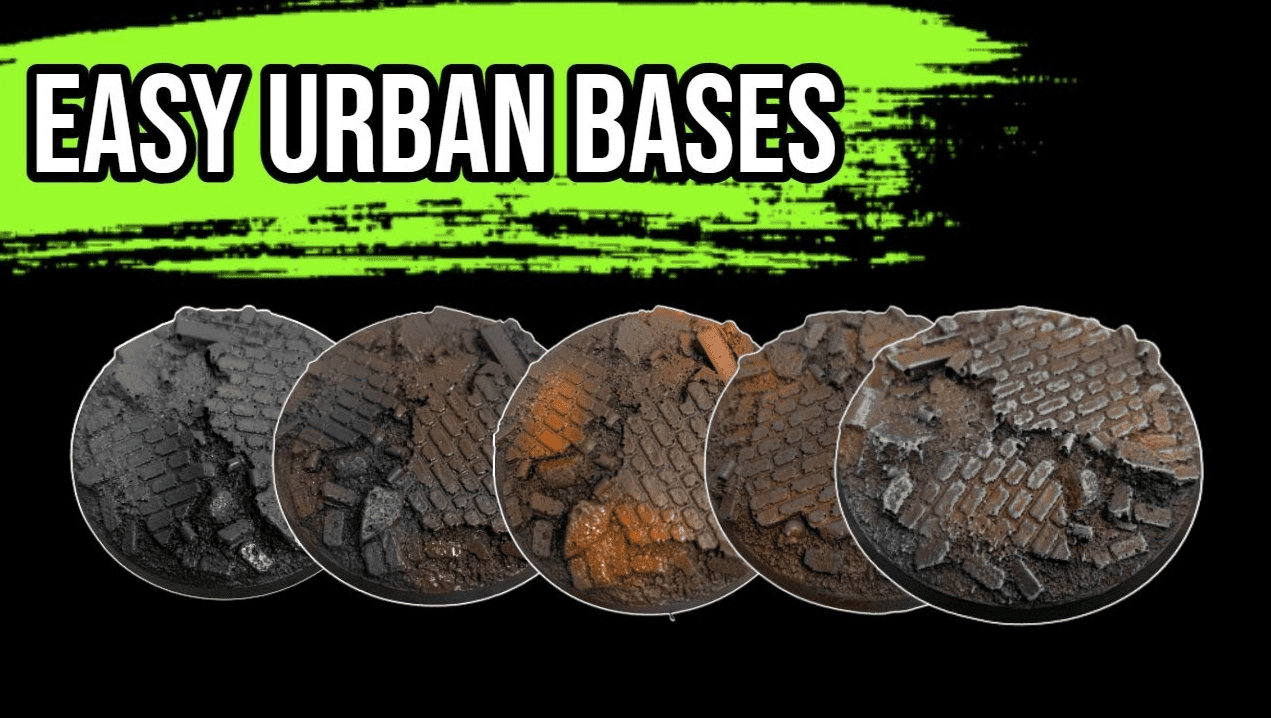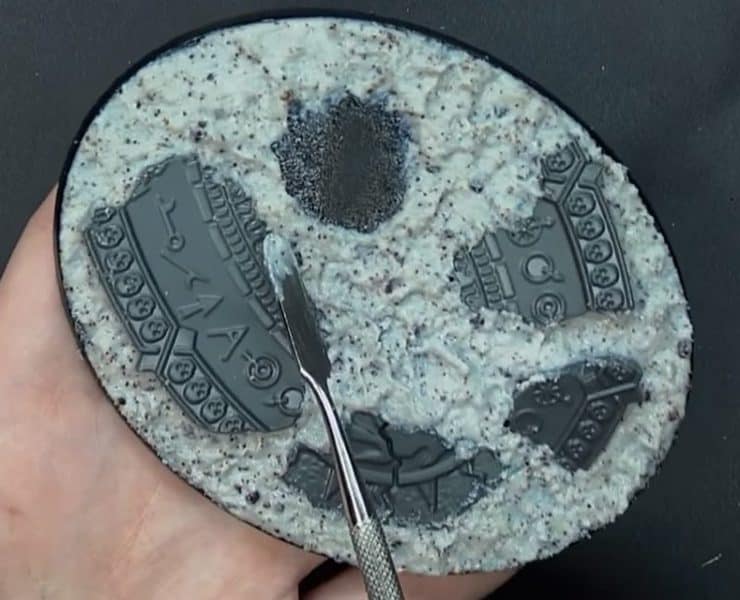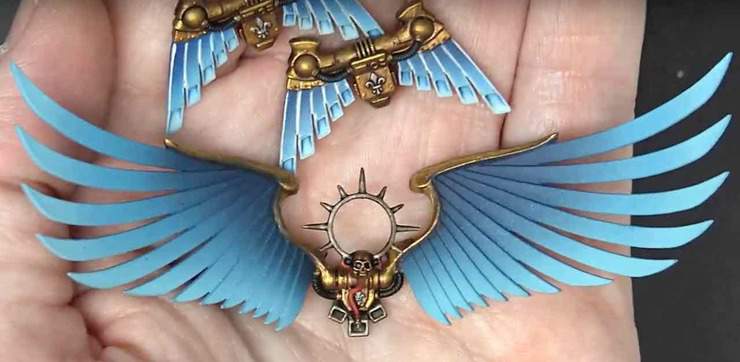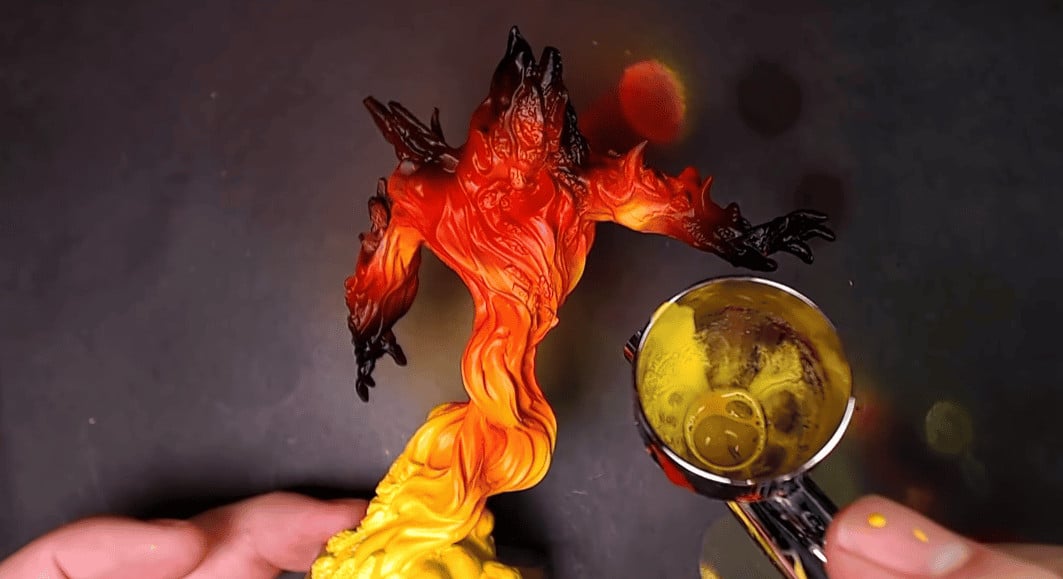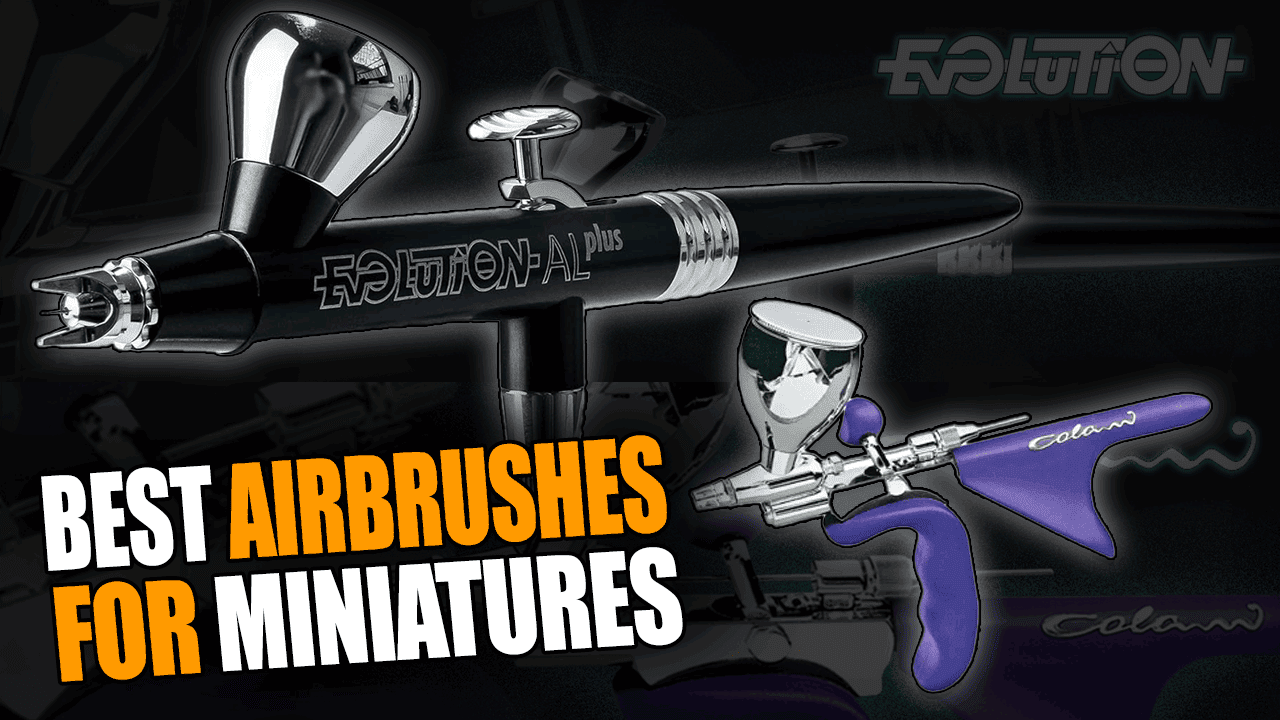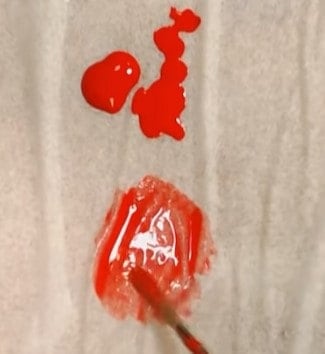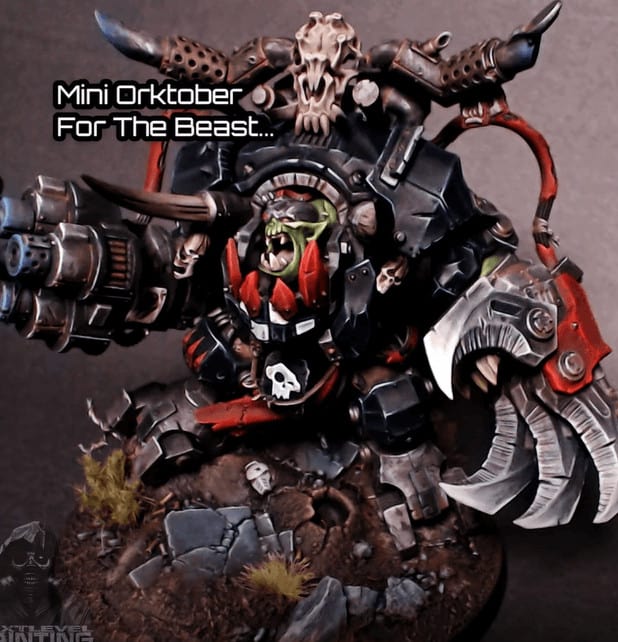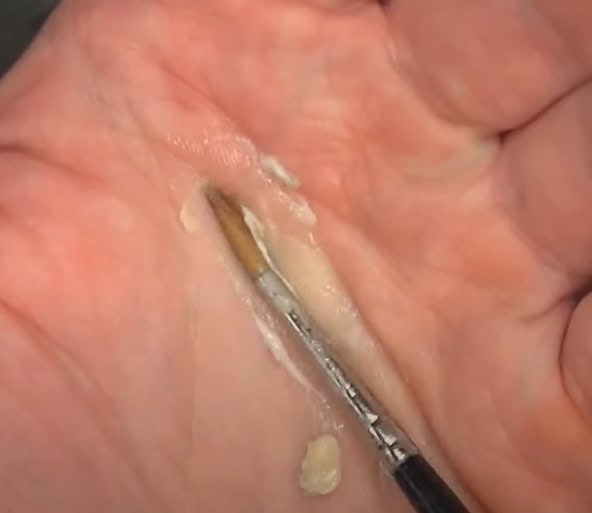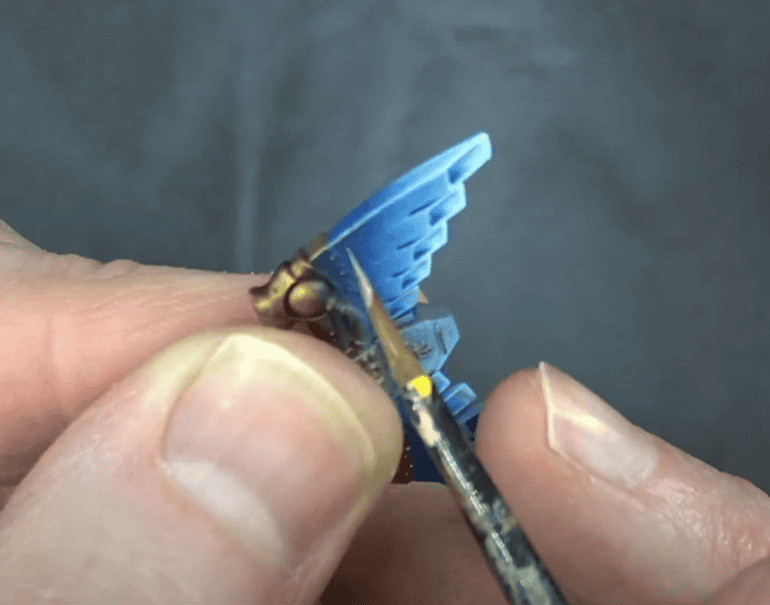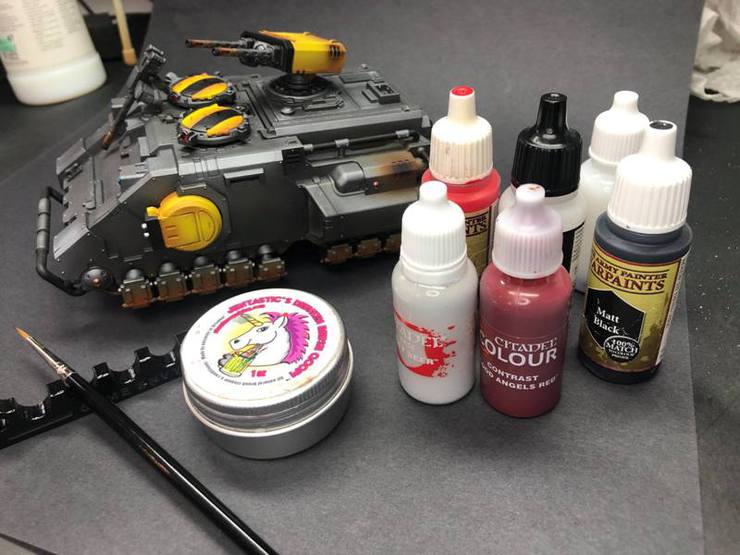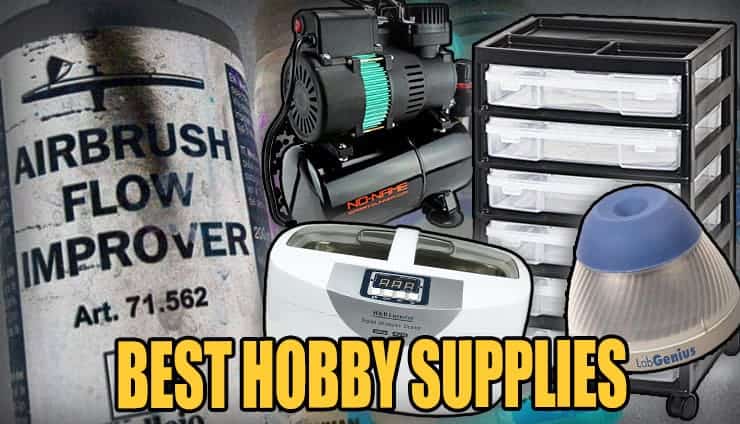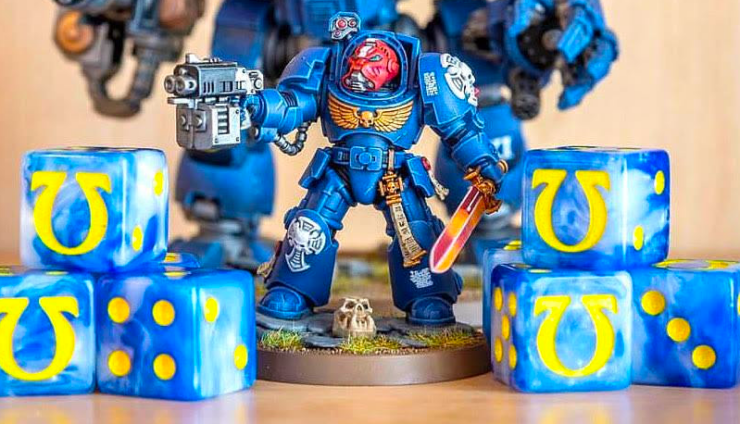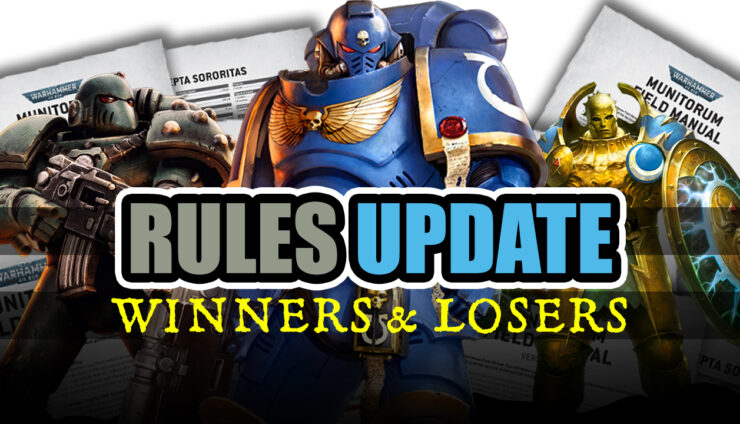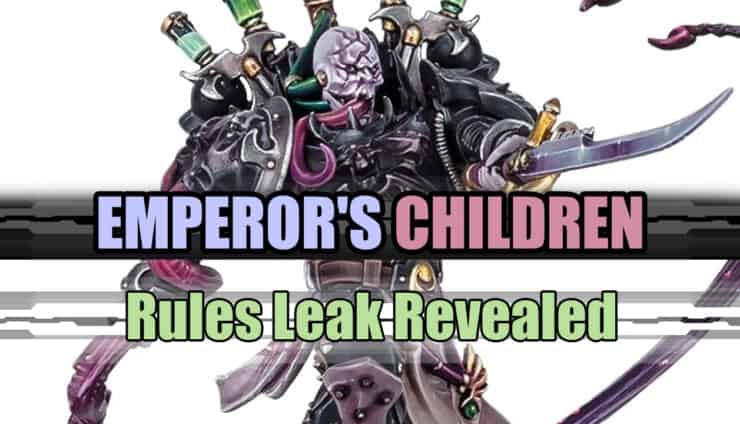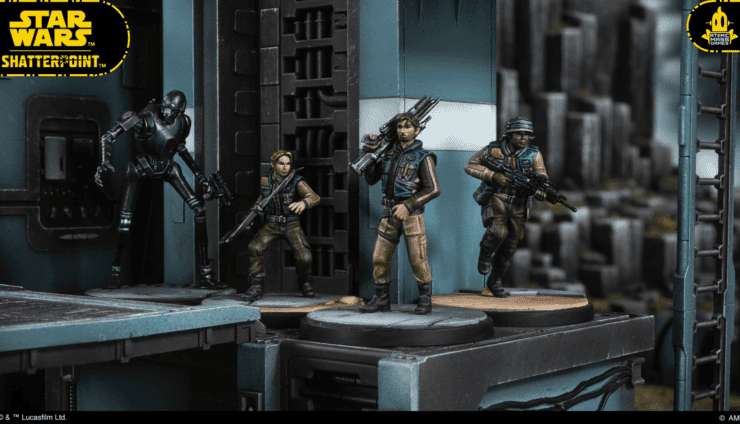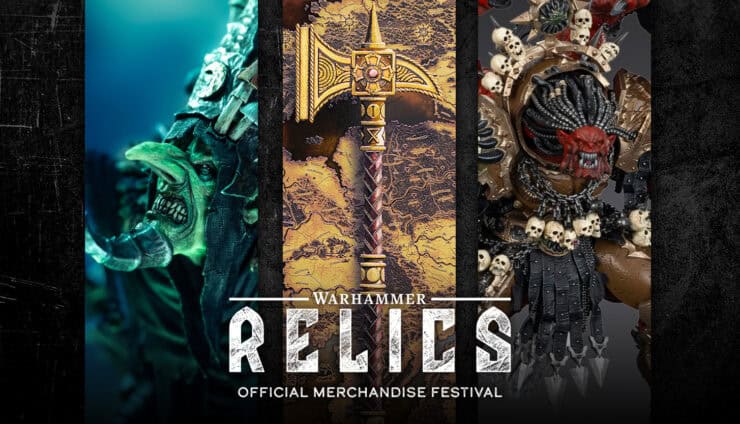This guide is designed to be a great place to learn how to paint miniatures like Warhammer and will take you from a bare plastic model to a finished masterpiece in a few short steps.
Whether you’re a veteran hobbyist looking to hone your skills or an eager newcomer, painting miniatures offers a relaxing blend of artistry and craftsmanship. Not only is painting an integral part of the tabletop miniatures hobby, but it can also be a lot of fun to learn new techniques.
How to Paint Miniatures: The Ultimate Hobby Guide
Miniature painting is a captivating and immersive hobby that allows you to showcase your artistic flair while indulging in your love for tabletop gaming. The process of painting these small miniatures requires intricate detail work to bring the characters from games like Warhammer to life with abundant colors and textures.
Whether you are looking to paint mythological creatures, historical figures, sci-fi figures, or Warhammer models for tabletop gaming, you will find this hobby both challenging and rewarding. Every brush stroke and color choice is a masterpiece in itself, and the final product is a testament to your hard work and creativity.
In this guide, we’ll explore the fundamentals of miniature painting, from selecting the right tools and materials to mastering essential techniques that breathe life into your creations. Miniature painting isn’t just about precision; it’s about infusing personality and narrative into figures that may stand just an inch tall but carry immense character.
Discover the techniques for priming, base coating, shading, highlighting, basing, weathering, and more. We’ll break down the step-by-step process behind transforming plain miniatures into works of art that command attention (or at least will look good on the tabletop.)
Whether you’re venturing into the realms of fantasy (AoS), sci-fi (Warhammer 40k), historical, or any other tabletop gaming, the principles of miniature painting remain universal, offering tons of opportunities for creative expression.
Find out more from our guide on how to paint miniatures by jumping to any of the sections below, or dig in from the beginning!
- Essential Tools & Materials
- Setting Up Your Hobby Workspace
- Preparing Your Miniatures
- Basic Painting Techniques
- Finishing Touches For Painting Miniatures
- Additional Painting Resources
- Frequently Asked Questions About Painting Miniatures
Essential Tools, Paints, & Supplies
Painting miniatures is a wonderful way to express creativity and bring colors to life. However, it is important to ensure you have everything you need before diving into the painting process. This includes gathering the right tools and materials, such as paintbrushes, paints, hobby tools, and other supplies that might be needed depending on the type of miniature painting/style you plan to do.
Having all the necessary materials and tools will not only make the painting process smoother and more enjoyable but will also ensure that you produce high-quality work that you can be proud of. Therefore, take the time to prepare well, and you’ll be on your way to painting amazing-looking miniatures in no time.
Paint Brushes
Choosing the appropriate brushes for painting your miniatures is very important. The success of your minis largely depends on the type and size of brush you use. It is worth having a diverse collection of brushes, including fine detail brushes for intricate work (such as faces, highlighting, etc.) and larger ones for covering broad areas and applying base coats (especially useful for things like tanks.)
Having a range of brush sizes in your hobby arsenal allows you to get the effects you want without forcing small details with a giant brush or spending hours base coating with a tiny brush!
You can read reviews and comparisons about the paint brushes we use ourselves or decide on which you’d prefer to paint with below!
- Bomb Wicks & Igniter Paintbrushes for Miniatures are some of the best brushes we’ve used and reasonably priced.
- High-Quality Sable Paint Brushes -If you want to take our game to the next level, the Game Envy Sable Brushes will do just that! They are more expensive than synthetic brushes but of much higher quality.
- Winsor Newton Series 7 Kolinsky Sable Brushes– they have a wide range of brushes for all levels of painters!
- Artis Opus—Many of the best painters love their brushes. They are expensive but high-quality and made for painting miniatures.
- The Army Painter Brushes– They have a huge range of brushes, from beginner sets to expert-level brushes! No matter your painting level, they have something for you.
Best Paints for Warhammer Miniatures
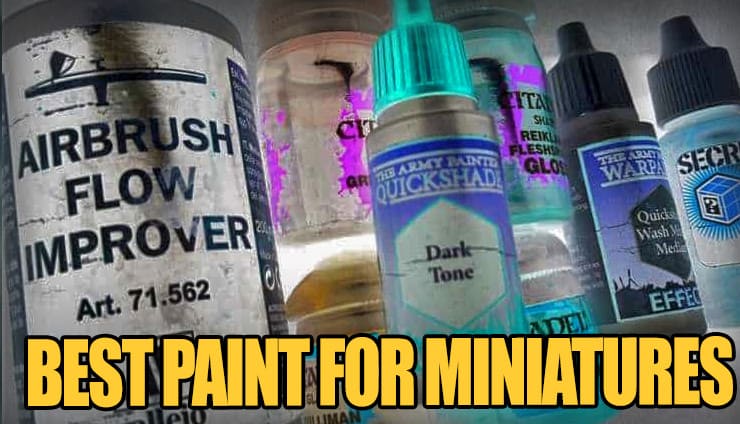
Additionally, acrylic paints are known for their durability and resistance to fading, making them a reliable choice for long-lasting miniature masterpieces (or tabletop-ready).
However, there are hundreds of different brands out there. It can be hard to navigate, so we’ve compared all the top brands, included color guides, and explained how to use them in a separate guide here.
Based on their individual pros and cons, these are the best brands for painting tabletop miniatures and wargame models, depending on your preferences.
- Citadel Paint (Games Workshop’s Brand): These Warhammer paints are widely available at most local games stores and GW stores worldwide. They have constant consistency across all batches. The only bad thing is that the paint pot uses a pour method, which can cause messes and paints to dry faster. Plus, the price is basically the highest per ML.
- Vallejo: Widely available at game stores outside of the United States. High consistency across all batches and a wide variety of styles of paints. Their line of air paints is loved by many as it was the first widely available to hobbyists. However, in recent years (even pre-COVID), restocks of Vallejo paints in the states have been problematic, to say the least.
- Pro Acryl: Available now in some of the best gaming stores worldwide, with one of the best bottle designs out there. Plus, the quality of the paint is insanely high.
- Turbodork: Also now available in most gaming stores worldwide, along with quick shipping in America. Their Turboshift colors are some of the most interesting out there.
- Scale 75: It’s available mostly online only, and shipping is quick in America. Their finish is a Matte, and it is one of the most realistic options around
- Army Painter: It is available at increasing numbers of game stores worldwide. Constant consistency across all batches and a color-match primer/ paint bottle system save hours of time hobbying. Plus, they even have an airbrushing and a Speedpaint (Contrast) line.
- P3 Paint (Privateer Press): There is high consistency across all batches, which is rumored to have been developed by hobby guru Mike McVey of McVey Studios. Previously found in most gaming stores, recent changes to how Privateer Press deals with retailers have caused many not to carry any Privateer products at all, sadly.
- Reaper Paints are on the lower end for price, and we regularly use the orange-brown and harvest brown for weathering and basing for yellows.
So, it looks like Army Painter has the lowest paint price per ML out of the other brands. Meanwhile, GW is topping the charts in terms of price. At the end of the day, it just comes down to what you look for in the best paints for miniatures & wargames models!
Oh, and just for fun, we did the math on what a gallon of Games Workshop paint would cost, which was quite eye-opening.
Primers
Priming your miniatures before painting is crucial to ensure that the paint adheres well to the surface and doesn’t flake or chip off easily. It involves applying a thin layer of primer, which improves paint adhesion, helps hide any imperfections or blemishes on the surface, and changes the color of the material you spray.
Additionally, priming allows for a smoother and more even paint application, resulting in a more professional-looking finish. Overall, priming is an important preparatory step that can significantly enhance the quality and longevity of your miniature painting project.
This tutorial has some great tips on how to prime your miniatures and tricks for setting up your projects for faster and easier painting times overall.
Wet Palettes & Water Cups
When it comes to painting, a paint palette or even a ” wet palette” is a must-have tool for artists. It allows them to mix various colors and thin the paint with ease. On the other hand, water cups are also essential for rinsing brushes between colors and maintaining the right paint consistency.
This comprehensive guide offers detailed instructions on how to properly utilize wet palettes for painting, including tips on water and paper selection, palette assembly, and maintenance.
Additionally, it features a carefully curated list of the top wet palettes available in the current market, complete with descriptions and recommendations to help you make an informed choice.
- Refilling Paint Water Pot– If you’re painting with a bunch of different colors, you can save yourself the trips of dumping water with the press of a button.
- Army Painter—We have had a few of their palettes for years, and they have held up great, worked really well, and have many features.
- Wet palette (small)—If you’re tired of wasting paints by watching them dry while you work on your models, it’s time to grab a wet palette.
Additional Supplies
Preparing your Warhammer miniatures before you paint them is important to ensure that they turn out the way you want. This could include using a range of additional supplies, such as a sturdy hobby holder to manipulate the miniature carefully, files to smooth out rough surfaces, or mold line removers to eliminate any unwanted mold lines that might interfere with painting.
By carefully preparing your models using the most beneficial tools for your project, you can create stunningly painted miniatures that you can be proud of.
Setting Up Your Hobby Workspace
It’s important to have a properly set-up workspace to ensure a fun and productive painting experience. The right lighting can help you see the colors accurately and adjust the intensity as needed. A comfortable seating position can prevent backaches and other discomforts that may arise from long painting sessions.
Paying attention to these details can create an environment that promotes creativity and helps you produce your best work.
Lighting
To ensure that your space is well-lit, it is highly recommended that you use a daylight bulb or LED lamp. These types of lighting options provide bright and evenly distributed illumination without casting any shadows, which is essential for tasks that require good visibility, such as reading or working on a project.
Daylight bulbs are designed to mimic natural daylight, which means they offer a color temperature of around 5000K to 6500K. They provide a bright, clear light that helps to reduce eye strain and improve focus. On the other hand, LED lamps have the added benefit of being energy-efficient, long-lasting, and highly versatile.
Good lighting is crucial for a comfortable and productive environment. It can enhance the visual appeal of your space and help you stay alert and focused. By using high-quality lighting, you can reduce the risk of headaches, eye fatigue, and other issues that can arise from poor lighting conditions.
Overall, investing in high-quality lighting, such as a daylight bulb or LED lamp, can enhance productivity, reduce eye strain, and create a more enjoyable experience in your space. You can read more about our favorite lights for minatures (or how to make your own “halo” setup), or grab our favorites below!
- Hobby Desk Light Halo This is a pretty cheap DIY solution
- Lampat Dimmable LED Light is a great $20 lamp that breaks down and re-assembles for travel
- Game Envy LUCENT art hobby light for miniatures is a great multi-angle light that comes in two different colors.
- Neatfi XL 2,200 Lumens LED Task Lamp is great for larger set-ups and is dimmable.
Seating and Ergonomics
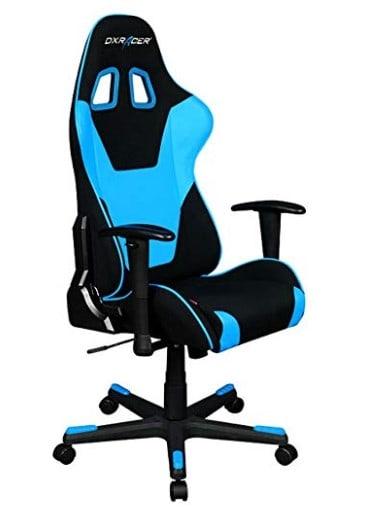
Additionally, if your chair is uncomfortable, you may shift and adjust frequently, distracting and affecting your focus. Therefore, properly setting up your painting area can greatly enhance your painting sessions and help you achieve your desired results with some of our favorite seating and ergonomics accessories.
- Dx Racer Chair—If you find yourself at the hobby desk, you don’t want to skip out on a good chair. This is what Rob uses himself.
- Gunnar Glasses- Protect From Harmful Blue Light, great for those harsh painting lights and computer monitor
- Purple Pad makes any chair better – hobbying takes a lot out of you, and this pad is great for long hours in the chair.
- Mobile Hobby Table- mobile dedicated hobby table you can use anywhere.
Preparing Your Miniatures
If you want to achieve a great final result when hobbying on miniatures, you must take the time to prepare them properly. This involves a range of tasks, such as cleaning, priming, and sanding. By doing this, you can ensure that the miniature is free of any impurities or imperfections that may affect the quality of the final result.
Proper preparation can help bring out the miniature’s finest details, ensure that any painting or other work you do on it will adhere properly, and result in a smooth and even finish.
Removing Mold Lines
When you decide to paint miniatures, it’s essential to start with a clean slate. Before you begin, inspect your miniatures for any mold lines, oils, or residues. These tiny flaws can be easily overlooked but can significantly impact the quality of the finished product.
To prevent these imperfections from affecting the overall look of your miniatures, it’s recommended that you remove any mold lines and wash the miniatures thoroughly. Removing mold lines involves using a hobby knife or file to scrape off any excess plastic or metal carefully. You can also use smaller sanders like this one to remove mold lines on less detailed areas.
This step will help create a smooth surface that’s perfect for painting.
Cleaning Miniatures
After removing mold lines, the miniatures should be washed with warm, soapy water to remove any oils or residues. This process will help ensure that the paint adheres properly to the miniature and doesn’t flake off. It’s important to use a gentle soap and avoid using any harsh chemicals that may damage the miniature.
Once the miniatures have been washed, it’s best to let them air dry completely before starting to paint. This will ensure that no water droplets are left on the miniature, which can cause the paint to run or smudge.
By properly preparing your Warhammer miniatures, you’ll achieve a flawless finish from your painting efforts that you can be proud of.
Priming Basics
Once you are ready to start priming, press the nozzle quickly back and forth while simultaneously moving the can back and forth. You can also rotate your pallet or the piece of cardboard your miniatures are resting on to get the paint in all the crevices for an even coat.
Once you are ready to start priming, press the nozzle quickly back and forth while simultaneously moving the can back and forth. You can also rotate your pallet or the piece of cardboard your miniatures are resting on to get the paint in all the crevices for an even coat.
A paint stir stick with your models lined up is another great and quick way to prime your minis. Keep your paint can approximately 4-6 inches away, making sure to quickly press and depress the nozzle while moving the spray back and forth. Your models will be primed in no time!
This tutorial has some great tips on how to prime your miniatures and tricks for setting up your Warhammer projects for faster and easier painting times overall.
Basic Painting Techniques
Mastering basic painting techniques is crucial to producing miniatures that catch the eye and evoke a sense of awe. These techniques include color theory, brushwork, layering, shading, blending, highlighting, and dry brushing.
By honing these skills, miniature painters can create intricate details, achieve smooth transitions between colors, and bring their miniatures to life. With practice, patience, and attention to detail, anyone can learn to paint nothing short of stunning miniatures.
Base Coating
When choosing a base color, it is important to consider the detailing colors that will be added on top of it. You want to choose a base color that will complement the detailing colors and maximize your creative effort. This means considering the color wheel and selecting a base color that is either complementary or analogous to the detailing colors.
By doing this, you’ll create a cohesive and unified look that will make your finished product stand out.
Layering
To add depth and richness to your paint job, it’s best to build up layers gradually rather than applying a thick layer all at once. This technique is particularly effective when painting surfaces without intricate details or sharp edges, such as flat armor or human skin.
Adding multiple thin layers of paint can create a subtle gradient of color and shadow, giving your work a sense of depth and dimension. So, take your time and apply each coat with care, allowing it to dry completely before adding the next.
With patience and attention to detail, you can achieve a stunning, multi-dimensional finish that brings your miniature to life. A great tutorial on painting flesh tone explains how to achieve this technique over multiple coats.
Washing
Washes are an excellent tool for any artist looking to add depth and dimension to their artwork without spending countless hours painting Warhammer models by hand. Applying washes to your canvas allows you to easily enhance shadows and outlines, creating a stunning visual effect that brings your artwork to life.
This technique is fast and efficient and produces a high-quality finish that is sure to impress. So, whether you are a seasoned artist or just starting, incorporating washes into your painting process is a must-try technique that we cover more in this tutorial.
Dry Brushing
Dry brushing is a painting technique used to add depth and texture to miniature models. Lightly brushing a contrasting color over raised surfaces accentuates the details and creates a realistic three-dimensional effect.
This method is particularly effective for highlighting sculpted figures’ details, such as wrinkles, scales, and fur. Dry brushing is easy to learn and can be done quickly, making it a popular choice among Warhammer hobbyists and professional painters alike.
Advanced Painting Techniques
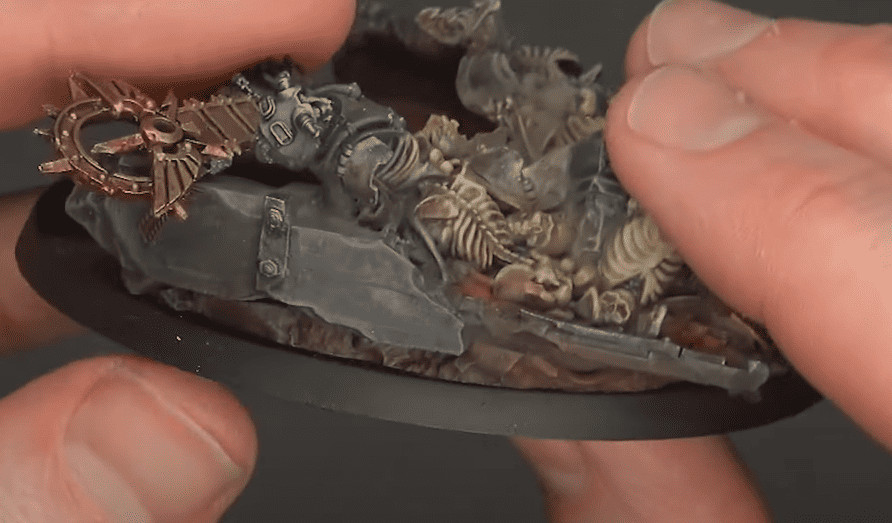
Glazing
Glazing is a sophisticated painting technique that involves the application of thin and transparent layers of paint. This method lets the artist gradually build the color intensity without concealing the underlying details. By layering the paint, each coat interacts with the previous one, creating a unique color and luminosity that cannot be achieved by any other means.
The process requires great skill and patience, as the artist must wait for each layer to dry before applying the next. The result is a painting with depth, richness, and a sense of luminosity that can be breathtaking. This tutorial explains how to apply glaze to Warhammer miniatures.
Wet Blending
Wet blending is a painting technique that involves using two (or more) different wet paint colors on a miniature to create a seamless transition between them. It is a popular technique among miniature painters who want to achieve a smooth gradient effect, making their creations appear more realistic and visually appealing.
Wet blending allows for more control and precision when creating color transitions, as the wet paint can be easily manipulated and blended together on the miniature’s surface. This technique requires a bit of practice and patience, but the results can be stunning and well worth the effort.
Detailing & Fine Touches
When it comes to Warhammer miniatures, paying attention to the finer details, like eyes or lenses, can really make your models stand out. Incorporating intricate elements such as eyes, buckles, and symbols may require some effort, but the outcome will enhance your miniature’s overall look and feel.
So, if you want to take your miniature game to the next level, don’t hesitate to add some extra intricacy like Squidmar does here for painting eyes!
Finishing Touches For Painting Warhammer Miniatures
After spending hours creating a masterpiece (or at least something you’re happy with), it is important to give your model the finishing touches that will take it to the next level. The final steps in miniature painting involve applying a protective layer to safeguard your work from damage.
Sealing and Protecting Your Miniatures
To preserve the quality of your Warhammer miniatures and prevent them from getting scratched, chipped, or damaged due to natural wear and tear, applying a layer of varnish (also called “Matte Coat”) once you have finished painting them is highly advisable.
Varnish acts as a protective shield or sealer and helps maintain the colors and details of your miniatures for a more extended period, ensuring that your hard work and creativity last longer. You can learn more about vanishing or sealing your miniatures in this tutorial.
Basing Your Miniatures
Basing is an essential technique that can elevate the appearance of your miniature. By creating a thematic ground for your miniature to stand on, you can add a sense of context and realism to your model. A well-crafted (or a resin cast) base can transport your miniature to a different place and time, making it more than just a static figure on a shelf.
By incorporating elements like rocks, foliage, or even miniature building ruins, you can create a stunning and immersive display that truly brings your miniature to life. You can even buy premade bases that are already painted or use pre-made designs available in cast resin for games like Warhammer.
Airbrushing Miniatures
Airbrushing models is an intriguing technique that involves using specialized tools to create unique effects and speed up the painting process. It’s popular with miniature painters and requires a significant investment in resources such as an airbrush, specialized paints, stencils, and other accessories.
An airbrush is a tool that uses compressed air or gas to spray paint onto a surface. It’s versatile and can be used for a wide range of applications, including painting miniatures, automobiles, and even murals. The specialized paints used in airbrushing (like Citadel Air for Warhammer) are designed to be sprayed through the airbrush and can create stunning effects such as gradients, fades, and textures.
To help you get started with airbrushing, we have curated a collection of how-to tutorials that cover everything from the basics of airbrushing to advanced techniques for creating stunning artwork.
Our tutorials are designed to guide you through the process of airbrushing, from selecting the right equipment to mastering the techniques required to produce beautiful minatures!
Solving Common Miniature Painting Problems
Even the most experienced minaiture painters can encounter issues while working with Warhammer models. These issues could include uneven brush strokes, color bleeding, or incomplete coverage. Knowing how to handle these problems comes with time, but we show how to solve many of these issues below.
Paint Consistency Problems
Adjusting the consistency of paint can prove to be a valuable skill when it comes to painting. It can help you overcome a variety of issues that may arise during the process. Whether your paint is too thick or too thin or simply not going on smoothly, knowing how to adjust the consistency can help you achieve the desired result.
Dealing with Mistakes
When it comes to painting miniatures, especially for Warhammer, mistakes are inevitable. However, with the help of quick fixes and strategic adjustments, these mistakes can be rectified with ease. Whether it’s a smudge, a misplaced stroke, or a color that doesn’t quite match, solutions can always help you fix the problem.
By taking the time to identify the issue and apply the necessary corrections, you can transform your painting from flawed to flawless in no time. So don’t get discouraged by mistakes; embrace them as an opportunity to learn and grow as an artist!
Additional Resources For Painting Miniatures
Many tools and resources are at your disposal to help you hone your miniature-painting skills. From online tutorials to physical workshops, you can explore different avenues to find what works best for you. With a little bit of effort and the right guidance, you can elevate your Warhammer miniature painting to new heights.
Online Tutorials
YouTube and Twitch are home to a ton of talented painters who share their knowledge and insights on how to paint miniatures of all kinds, not just Warhammer. By following your favorite painters, you can gain access to a wealth of valuable tips and advice that can help you enhance your miniature painting skills.
Painting Workshops & Community Forums
YouTube and Twitch have taken over a lot of the miniature painting and Warhammer community (as it’s easy to see and then do), but there are still plenty of great resources out there, like long-form tutorials, to utilize for improving your painting game!
Frequently Asked Questions About Painting Miniatures
How often should I clean my brushes?
It is important to clean your paintbrushes with brush soap after each session. This removes any residual paint and helps to maintain their shape and condition. Wet the brush, work the soap into the bristles, and rinse well with water. Be sure to reshape the brush while still wet and allow it to dry completely before storing it.
Following these simple steps, you can keep your brushes in excellent condition and extend their lifespan.
What is the best type of paint for miniature painting?
Acrylic paints are generally the best choice for miniature painting due to their easy use, quick drying time, and water solubility. Read our list of miniature paint brand comparisons to help you decide.
Is it necessary to prime miniatures before painting?
Pretty much, yes. Priming is essential as it helps the paint adhere better to the surface of the miniature and provides a more even coat in the finished product.
How can I improve my precision when painting small details on Warhammer models?
Using fine-detail brushes and practicing steady hand techniques can significantly improve precision in painting small details.
What should I do if the paint on my miniature looks chalky?
A chalky appearance usually indicates that the paint was too thick or not sufficiently mixed. Thinning your paints with a few drops of water or a flow improver can help.
Miniature painting is an incredibly rewarding hobby that allows for unlimited artistic expression and technical mastery. With the right skills, patience, and practice, you can transform simple Warhammer models into beautiful, eye-catching miniatures that are nothing less than works of art.
Painting miniatures can be challenging, but with continuous learning and practice, you can enhance your techniques and take your models to the next level. The key is to enjoy the process and let your creativity flow as you bring your miniatures to life, one stroke at a time.
- Recommended Tabletop Hobby Supplies
- Our Library of How To Paint Warhammer Tutorials
- More on Airbrushing Miniatures
- Lights for Painting Miniatures
- Best Acrylic Paints for Tabletop Miniatures & Models
- Miniature Storage Cases & Transport Options
- Best Magnet Sizes For Warhammer 40k Models
What tips do you have for painting tabletop miniatures?
Let us know in the comments of our Facebook Hobby Group or our new Discord server. Make sure you enter the latest monthly giveaway for FREE today!
Click Here To Follow Us On Google News
Get ad-free access to our hobby videos and a monthly drop of miniatures. Plus, support some of the best creators out there for as little as $6 a month on Patreon!
 Click Here For All the Hobby Products & Tools We Swear By
Click Here For All the Hobby Products & Tools We Swear By
